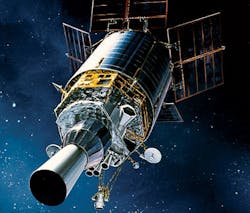So-called rad-hard electronic components typically must be specially designed to withstand naturally occurring radiation in space, and avoid the effects that radiation can have on electronics, such as bit flips, other kinds of damage, or complete failures from burnout. It takes time to design radiation-hardened processors, memory chips, and other computer components, so typically spacecraft designers must rely on older generations of computer hardware.
Still, the past year has some encouraging signs on the radiation-hardened electronics community. Just this week the BAE Systems Electronic Systems segment in Manassas, Va., announced qualification of the company's 45-nanometer application-specific integrated circuit (ASIC) technology to the stringent guidelines of the military's Qualified Manufacturers List (QML) Level V.
Related: BAE Systems wins certification for radiation-hardened integrated circuits for use in space
That's not an easy task. Qualifying advanced submicron chip technology to QML Level V takes time and investment. QML Level V is the highest and most demanding military qualification for electronics radiation hardness, and it means that advanced submicron ASIC technology now is available to meet the military's most stringent reliability requirements for crucial space applications like reconnaissance and strategic communications satellites.
The BAE Systems announcement of qualification to QML Level V for the company's 45-nanometer processor technology, however, isn't the only encouraging news lately for spacecraft designers who need late-generation microelectronics for sophisticated sensor payloads and other on-board spacecraft electronics.
Last April Microsemi Corp. in Aliso Viejo, Calif., introduced the company's RTG4 radiation-tolerant high-speed field-programmable gate array (FPGA) family for manned spacecraft and satellites. The device is for applications requiring as many as 150,000 logic elements and as much as 300 MHz of system performance.
Related: Radiation-tolerant FPGAs for space and high-altitude aviation introduced by Microsemi
Last December ON Semiconductor in Phoenix announced a partnership with ICs LLC in McCall, Idaho, to design radiation-hardened ASIC for high-reliability applications like space exploration, satellite communications and surveillance, avionics, unmanned aerial vehicles (UAVs), commercial aircraft, nuclear energy, particle physics research, and military equipment.
With developments like these, spacecraft designers don't have to feel like the red-headed stepchildren when it comes to getting access to advanced computing hardware for on-orbit applications.
In addition, with rad-hard suppliers like BAE Systems, Honeywell, Microsemi, and ON Semiconductor, perhaps we can see a clear path forward for new generations of technologically sophisticated satellites and vehicles for space exploration.




